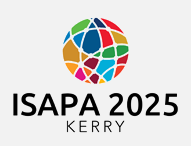Start Date
18-6-2025 9:00 AM
End Date
18-6-2025 10:30 AM
Abstract
Background: This study explored the experiences of Para sport athletes in Ireland, focusing on factors that may enhance recruitment, retention, and their overall sporting experience.
Methods: A mixed-methods design was used including semi-structured interviews (n =21) and a survey (n=75). An inductive–deductive approach was applied to qualitative data. Descriptives statistics were computed for quantitative data. Integration of data types was achieved via joint display tables.
Results: Participants (60% male, mage = 30.6) represented 15 Para sports. Regarding entry into Para sport, athletes were most commonly introduced via rehabilitation/physio programmes, National Governing Bodies (NGB), or family and friends. Enjoyment and competition were the primary motivators for initial participation. The most-frequently cited barriers to beginning to participate in Para sport included dependence on others, equipment-related expenses, and a lack of sporting opportunities nearby. In later participation, Para athletes reported varying experiences of training conditions, competitions, and coaching support. Common barriers that continued to hinder Para sport participation included equipment-related expenses, a lack of transportation to training/competitions, and a lack of other athletes nearby. Perspectives on NGB support, classification, injuries, and benefits of Para sport were also attained. Qualitative findings aligned with survey responses providing a nuanced insight into these phenomenon.
Conclusion: This study provides a comprehensive account of how Irish athletes enter and progress within the Para sport system. Several areas are identified that may be critical for improving entry into Para sport and continuation of participation. The data also provide evidence for the overwhelming benefit of Para sport participation.
Recommended Citation
Dineen, Alan Mr; Kearney, Phil Dr; Murtagh, Elaine Prof; Nugent, Frank Dr; Sherwin, Ian Dr; Hughes, Brian Mr; and healy, sean, "Gateways and Pathways within Para Sport in Ireland; the Perspectives of Athletes" (2025). International Symposium of Adapted Physical Activity and International Symposium on Physical Activity and Visual Impairment and Deafblindness. 15.
https://sword.mtu.ie/isapa/2025/day3/15
Gateways and Pathways within Para Sport in Ireland; the Perspectives of Athletes
Background: This study explored the experiences of Para sport athletes in Ireland, focusing on factors that may enhance recruitment, retention, and their overall sporting experience.
Methods: A mixed-methods design was used including semi-structured interviews (n =21) and a survey (n=75). An inductive–deductive approach was applied to qualitative data. Descriptives statistics were computed for quantitative data. Integration of data types was achieved via joint display tables.
Results: Participants (60% male, mage = 30.6) represented 15 Para sports. Regarding entry into Para sport, athletes were most commonly introduced via rehabilitation/physio programmes, National Governing Bodies (NGB), or family and friends. Enjoyment and competition were the primary motivators for initial participation. The most-frequently cited barriers to beginning to participate in Para sport included dependence on others, equipment-related expenses, and a lack of sporting opportunities nearby. In later participation, Para athletes reported varying experiences of training conditions, competitions, and coaching support. Common barriers that continued to hinder Para sport participation included equipment-related expenses, a lack of transportation to training/competitions, and a lack of other athletes nearby. Perspectives on NGB support, classification, injuries, and benefits of Para sport were also attained. Qualitative findings aligned with survey responses providing a nuanced insight into these phenomenon.
Conclusion: This study provides a comprehensive account of how Irish athletes enter and progress within the Para sport system. Several areas are identified that may be critical for improving entry into Para sport and continuation of participation. The data also provide evidence for the overwhelming benefit of Para sport participation.

